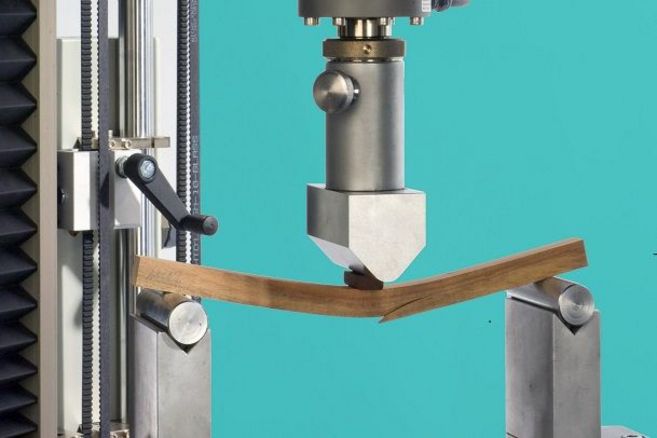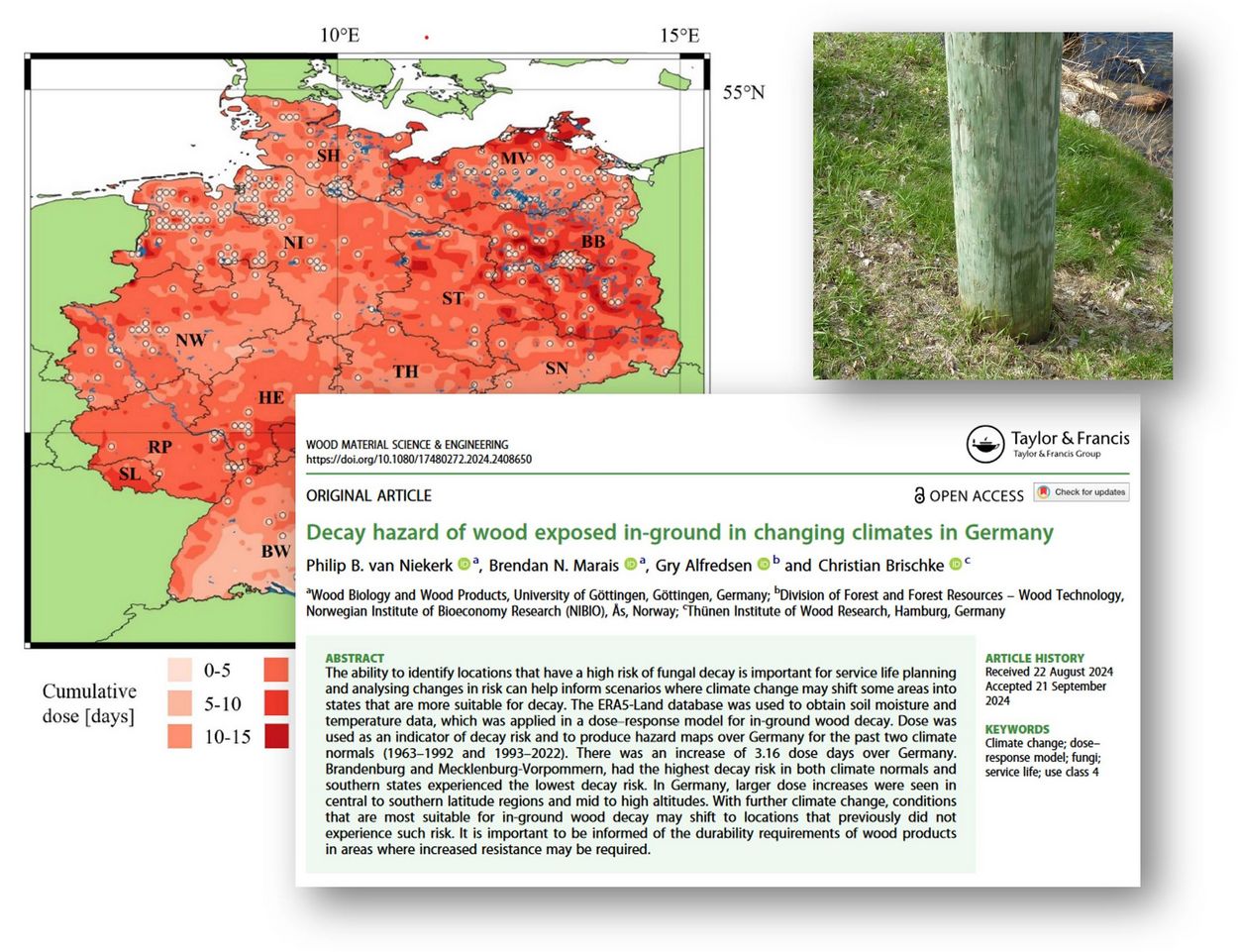The ability to identify locations that have a high risk of fungal decay is important for service life planning and analysing changes in risk can help inform scenarios where climate change may shift some areas into states that are more suitable for decay. The ERA5-Land database was used to obtain soil moisture and temperature data, which was applied in a dose–response model for in-ground wood decay. Dose was used as an indicator of decay risk and to produce hazard maps over Germany for the past two climate normals (1963–1992 and 1993–2022). In Germany, larger dose increases were seen in central to southern latitude regions and mid to high altitudes. With further climate change, conditions that are most suitable for in-ground wood decay may shift to locations that previously did not experience such risk. It is important to be informed of the durability requirements of wood products in areas where increased resistance may be required.
Contact:
More informations:







